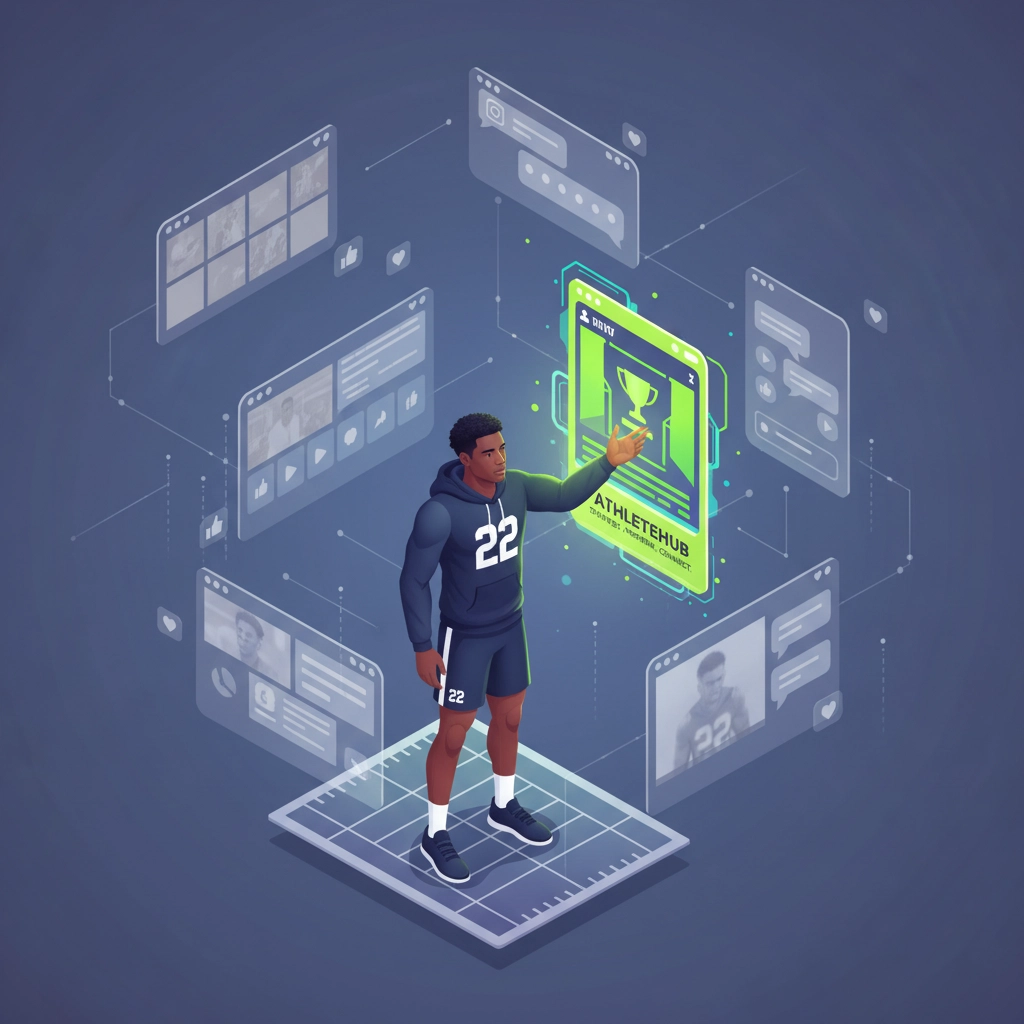The NIL (Name, Image, and Likeness) landscape continues to evolve in 2025. Athletes and brands engage in partnerships with increased frequency and complexity. Common errors persist across these relationships, resulting in financial losses, compliance violations, and damaged reputations.
The following seven mistakes occur regularly in NIL partnerships. Each mistake includes specific remediation strategies based on current industry practices and regulatory requirements.
Mistake 1: Inadequate Contract Review and Legal Oversight
Athletes frequently execute agreements without comprehensive legal evaluation. Standard contract language contains provisions that favor the contracting entity over the athlete. Terms regarding compensation, exclusivity periods, termination clauses, and intellectual property rights require detailed analysis.

Common problematic clauses include:
- Compensation determined solely at company discretion
- Extended exclusivity periods spanning multiple seasons
- Broad usage rights extending beyond agreed timeframes
- Automatic renewal provisions without renegotiation opportunities
Solution Implementation:
Retain qualified legal counsel specializing in sports and entertainment law. Legal review should occur before initial contract discussions. Budget allocation for legal fees ranges from 5-10% of total deal value. Legal professionals identify unfavorable terms and negotiate modifications protecting athlete interests.
Documentation requirements include:
- Detailed compensation schedules
- Specific deliverable descriptions
- Clear termination procedures
- Defined usage parameters for athlete likeness
Mistake 2: Non-Compliance with Regulatory Framework
NIL agreements operate within complex regulatory environments. NCAA regulations, state legislation, federal tax law, and institutional policies create overlapping compliance requirements. Violations result in eligibility loss, financial penalties, and legal consequences.
Current compliance areas include:
- NCAA interim policy guidelines
- State-specific NIL legislation
- Federal Trade Commission disclosure requirements
- Institution-specific NIL policies
Solution Implementation:
Establish compliance verification procedures with institutional athletic departments. Submit contract proposals for preliminary review before execution. Maintain current knowledge of regulatory changes through official channels and legal updates.
Compliance documentation should include:
- Athletic department approval letters
- Disclosure statement confirmations
- Tax obligation acknowledgments
- Academic progress monitoring agreements
Mistake 3: Insufficient Financial Planning and Tax Preparation
NIL income classification as taxable earnings requires systematic financial management. Athletes often lack experience with business income, quarterly tax payments, and deduction optimization. Poor financial planning results in unexpected tax liabilities and cash flow problems.
Tax considerations include:
- Self-employment tax obligations
- Quarterly estimated payment requirements
- Business expense deduction opportunities
- State tax implications for multi-state activities
Solution Implementation:
Engage certified public accountants with sports industry experience. Establish separate business banking accounts for NIL transactions. Implement systematic record-keeping for income and expenses. Reserve 25-35% of gross NIL income for tax obligations.
Financial management systems should include:
- Monthly income and expense tracking
- Quarterly tax payment schedules
- Business expense categorization
- Professional fee budgeting
Mistake 4: Excessive Brand Control Relinquishment
Athletes surrender disproportionate control over personal brand management in exchange for immediate compensation. Contracts often contain broad licensing terms allowing unlimited usage of athlete likeness without additional compensation or approval requirements.

Problematic control provisions include:
- Perpetual usage rights beyond contract terms
- Unrestricted sublicensing to third parties
- Broad content creation requirements
- Exclusive representation across all sports categories
Solution Implementation:
Negotiate specific usage parameters limiting brand partner rights. Maintain approval authority over content creation and distribution. Include termination clauses allowing relationship dissolution under defined circumstances. Structure compensation tiers based on usage scope and duration.
Brand protection strategies include:
- Limited licensing terms with renewal options
- Content approval mechanisms
- Usage reporting requirements
- Compensation adjustment provisions
Mistake 5: Overcommitment and Resource Allocation Errors
Athletes accept multiple simultaneous partnerships without adequate capacity assessment. Conflicting obligations create delivery failures, brand relationship damage, and potential breach of contract situations. Academic and athletic performance may decline due to excessive commercial commitments.
Overcommitment indicators include:
- Overlapping exclusivity agreements
- Unrealistic content production schedules
- Conflicting appearance requirements
- Insufficient time allocation for core responsibilities
Solution Implementation:
Conduct systematic capacity assessment before accepting partnership opportunities. Implement scheduling systems tracking all commercial obligations. Prioritize partnerships aligning with personal values and career objectives. Establish maximum commitment thresholds protecting academic and athletic performance.
Capacity management systems include:
- Weekly time allocation tracking
- Partnership obligation calendars
- Performance impact monitoring
- Strategic opportunity evaluation matrices
Mistake 6: Platform Selection and Audience Development Inefficiencies
Athletes often neglect strategic social media platform selection and audience development. Generic content distribution across multiple platforms reduces engagement effectiveness and partnership value. Inadequate audience analytics limit partnership negotiation leverage.
Platform optimization challenges include:
- Inconsistent content quality across channels
- Insufficient audience engagement metrics
- Limited demographic targeting strategies
- Weak personal brand differentiation
Solution Implementation:
Develop platform-specific content strategies maximizing audience engagement. Utilize analytics tools measuring engagement rates, demographic composition, and growth trends. Focus development efforts on platforms demonstrating highest audience engagement and commercial potential.
Platforms such as Fanz.us provide specialized environments for sports-focused audience development. These platforms offer enhanced targeting capabilities and direct fan engagement opportunities unavailable on general social media platforms.

Audience development strategies include:
- Platform-specific content optimization
- Engagement rate monitoring and improvement
- Demographic analysis and targeting refinement
- Cross-platform promotion coordination
Mistake 7: Short-Term Focus and Long-Term Career Planning Neglect
Athletes prioritize immediate compensation over long-term career development and financial security. Partnerships lacking strategic alignment with career objectives provide minimal lasting value. Inadequate savings and investment strategies leave athletes vulnerable to post-graduation financial challenges.
Short-term thinking manifestations include:
- Acceptance of low-value partnerships for immediate cash
- Neglect of personal brand development
- Insufficient savings allocation from NIL income
- Limited consideration of post-graduation career planning
Solution Implementation:
Develop comprehensive career planning strategies extending beyond athletic participation. Allocate specific percentages of NIL income to savings, investment, and education funding. Prioritize partnerships providing skill development and professional networking opportunities.
Long-term planning components include:
- Educational funding allocation
- Professional skill development investment
- Industry networking relationship building
- Post-graduation career pathway exploration
Strategic Partnership Platform Utilization
Modern NIL partnerships benefit from specialized platform utilization designed specifically for sports audiences and brand collaboration. Traditional social media platforms often dilute sports-focused content within broader entertainment categories.
Sports-focused platforms such as Fanz.us provide concentrated environments where athletes connect directly with sports fans and potential brand partners. These platforms offer enhanced analytics, targeted advertising capabilities, and community features unavailable on general platforms.
Platform advantages include:
- Sports-specific audience concentration
- Enhanced partnership matching capabilities
- Specialized analytics and reporting tools
- Direct brand collaboration interfaces
Implementation Timeline and Best Practices
Successful NIL partnership management requires systematic implementation of corrective measures. Athletes should address identified mistakes through phased improvement strategies over defined timeframes.
Implementation phases include:
- Immediate compliance and legal review (30 days)
- Financial management system establishment (60 days)
- Platform optimization and audience development (90 days)
- Long-term strategic planning implementation (ongoing)
Regular evaluation and adjustment of partnership strategies ensures continued alignment with career objectives and market conditions. Professional guidance from legal, financial, and marketing specialists provides essential support throughout implementation processes.
Athletes implementing these corrective strategies typically demonstrate improved partnership outcomes, enhanced financial stability, and stronger personal brand development within competitive NIL marketplaces.
